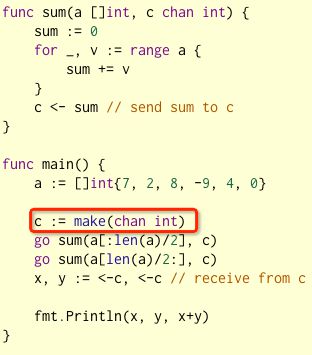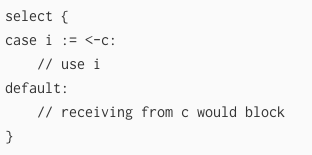Go Concurrency
【Go Concurrency】
1、A goroutine is a lightweight thread managed by the Go runtime.

2、Channels are a typed conduit through which you can send and receive values with the channel operator, <-.

3、Like maps and slices, channels must be created before use:

By default, sends and receives block until the other side is ready. This allows goroutines to synchronize without explicit locks or condition variables.

4、Channel会缓存。

5、A sender can close a channel to indicate that no more values will be sent. Receivers can test whether a channel has been closed by assigning a second parameter to the receive expression: after

ok is false if there are no more values to receive and the channel is closed.
The loop for i := range c receives values from the channel repeatedly until it is closed.
Note: Only the sender should close a channel, never the receiver. Sending on a closed channel will cause a panic.
Another note: Channels aren't like files; you don't usually need to close them. Closing is only necessary when the receiver must be told there are no more values coming, such as to terminate a range loop.

6、The select statement lets a goroutine wait on multiple communication operations.
A select blocks until one of its cases can run, then it executes that case. It chooses one at random if multiple are ready.


7、The default case in a select is run if no other case is ready.
Use a default case to try a send or receive without blocking:
